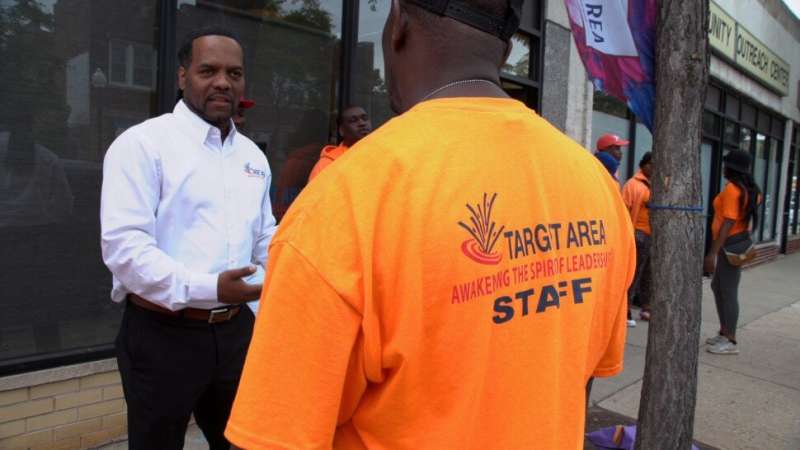Study reveals extreme levels of exposure to violence, risk of being shot for community violence intervention workers

Sixty percent of violence intervention workers in Chicago have witnessed a shooting attempt; 32% have witnessed someone else get shot while at work; 20% have been shot at while at work; and another 2% have been shot at and injured on the job.
These are among the sobering findings of the Violence Intervention Worker Study (VIeWS), a landmark study conducted by Northwestern University and the University at Albany, SUNY.
The researchers completed a near census of the street outreach workforce in Chicago. It is the first study to provide a comprehensive look at the lives and conditions of these essential workers who play a pivotal role in violence prevention.
With gun-related homicides in the U.S. at the highest level in 25 years, Community Violence Intervention (CVI) programs are being widely discussed at the federal and local levels as a key strategy for curbing gun violence. However, until now, almost nothing was known about those individuals carrying out the lifesaving work of CVI, also known as "street outreach workers."
Co-led by sociologists Andrew Papachristos of Northwestern and David Hureau of the University at Albany, the study aims to draw attention to the personal costs associated with street outreach work as the field scales up in response to the nationwide surge in violent crime.
The study was co-designed and facilitated with CVI leaders Jalon Arthur, director of strategic initiatives at Chicago CRED, and Christopher Patterson, assistant secretary of the Illinois Department of Human Services Office of Firearm Violence Prevention.
The study also found that 80% of violence interventionists arrived at a scene of violence before traditional first responders, such as police and emergency medical technicians. In contrast to these traditional first responders, violence interventionists are called upon not only to respond to acute violence, but also to maintain a presence in its aftermath, helping affected parties cope and managing the threat of retaliation and additional violence.
A working paper is available for view on the website of Northwestern's Institute for Policy Research, where Papachristos is a faculty fellow. He also co-directs the Northwestern Neighborhood & Network Initiative (N3), which coordinated the research for the Chicago-based study. Watch a recording of the VIeWS press conference on June 2.
Relying on N3's existing partnerships with street outreach organizations in Chicago to develop and implement the survey, the research team surveyed nearly the entire street outreach workforce in the city, polling 181 individuals from 15 organizations—a 93% response rate.
"Understanding and supporting this vital workforce is essential in building community-based responses to violence. Outreach staff are, literally, putting their own lives on the line without any of the resources to cope and manage the exposure to violence and stress we are seeing in this study," said Papachristos, a professor of sociology in the Weinberg College of Arts and Sciences at Northwestern.
"For many good reasons, this is a moment when policymakers are making significant investments in street outreach," said Hureau, executive director of the Hindelang Criminal Justice Research Center and assistant professor in the School of Criminal Justice at the University at Albany. "Our results suggest that a meaningful portion of this investment should be dedicated to supporting the safety, health and well-being of the people who perform this important community work—not just scaling up the practice as it currently exists."
Other key findings of the study:
- The average violence interventionist is typically a Black or Latino male in his early 40s with a high school diploma or GED.
- Chicago street outreach workers reported comparable levels of being shot at (over a 12-month period) as samples of large-city police officers.
- When compared against samples of high-risk young adults involved in serious crime, only those carrying illegal guns were shot more than the study's workers.
The research team's next step in summer of 2022 is to begin investigating cities beyond Chicago, starting with New York's state-funded SNUG program, which serves 12 localities, including Albany, Buffalo, Rochester, Syracuse and Troy. Follow-up surveys of Chicago's street outreach workers are also planned for 2022.
More information: Exposure to Gun Violence Among the Population of Chicago Community Violence Interventionists (WP-22-12). www.ipr.northwestern.edu/our-w … s/2022/wp-22-12.html
Provided by Northwestern University




















